J.Crew, a staple in American fashion, has been a beacon of classic, timeless style for decades. Known for its high-quality apparel and accessories, J.Crew offers a diverse range of products for men, women, and children, including everything from swimwear and outerwear to suiting and jewelry. With a history spanning back to 1947, the brand has evolved significantly, not only in its product offerings but also in its branding and logo design, reflecting shifts in fashion trends and market demands.
Founded by Mitchell Cinader and Saul Charles, the company started as Popular Merchandise, Inc., selling women’s clothing through in-home demonstrations. By the mid-1980s, J.Crew had rapidly expanded its catalog operations, capturing the attention of upper-middle-class customers with its promise of Ralph Lauren-like styles at more affordable prices. This explosive growth led to annual sales skyrocketing from $3 million to over $100 million within just five years. In 1983, the brand rebranded itself as J.Crew, marking the beginning of a new era in its storied history.
The brand’s first retail store opened in 1989 in South Street Seaport, Manhattan, signaling J.Crew’s shift from a purely catalog-based business to a major retail presence. Throughout the years, J.Crew has navigated various ownership changes, including a significant investment by Texas Pacific Group in 1997 and a return to private ownership in 2011 under TPG Capital LP and Leonard Green & Partners LP. Despite financial challenges, including a notable bankruptcy filing in 2020 amidst the COVID-19 pandemic, J.Crew has continually adapted and evolved.
A crucial aspect of J.Crew’s identity and a key indicator for vintage fashion enthusiasts is the evolution of its logos and tags. From the classic, elegant script of the 1947-1983 era to the blocky, capitalized format introduced in 1983, and finally to the stylized script of the current logo, these changes reflect broader trends in design and branding. Similarly, the tags on J.Crew garments have transformed, offering insights into the company’s manufacturing history and the shifting landscapes of global fashion production. Understanding these details not only helps in identifying vintage J.Crew pieces but also offers a glimpse into the rich heritage and enduring appeal of this iconic brand.
Old J Crew TV Commercial
How to tell if J. Crew is vintage from the logo
J. Crew has a rich history and its logos have evolved significantly over the decades. Understanding these changes can help in identifying vintage pieces. Here is a detailed look at the different J. Crew logos over the years and how they have transformed.
1947 to 1983 J. Crew logo
- The earliest J. Crew logo from this period featured a very classic and elegant script.
- This script was cursive and had a very traditional look, reflecting the era’s design sensibilities.
- The use of this logo was consistent on tags and branding during these years.

1947 to 1983 J Crew logo
1983 to 2012 J. Crew logo
- In 1983, J. Crew introduced a more modern and minimalist logo.
- The text was changed to a blocky, capitalized format, making it more readable and straightforward.
- This logo became iconic for the brand and was widely recognized.

1983 to 2012 J Crew logo
2012 to now J. Crew logo
- The current logo introduced in 2012 brought back a touch of elegance with a more stylized script.
- This modern script is sleeker and more refined, while still maintaining the brand’s heritage.
- The logo is often used in a simple black color, reflecting contemporary design trends.
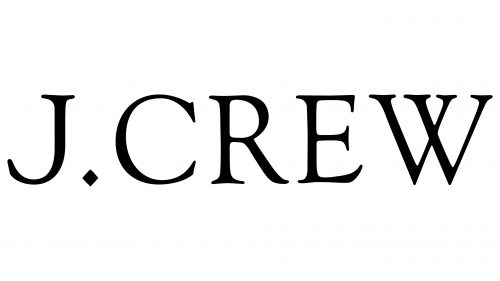
2012 to now J Crew logo
How to tell if J.Crew is vintage from the tags
J.Crew, known for its classic American style, has seen various changes in its branding and tag designs over the decades. The evolution of J.Crew tags can help identify the era of a garment, reflecting shifts in fashion trends and manufacturing locations. Below is a guide to help determine if a J.Crew item is vintage based on its tags.
Having trouble identifying vintage tags or labels? Upload a picture on our vintage tag identification page, and we’ll help you out!
1970s vintage J.Crew tags
- Tags often feature a simple, clean design with the J.Crew logo.
- Tags may include “Made in USA” indicating domestic production.
- Materials and craftsmanship are indicative of the era’s quality standards.
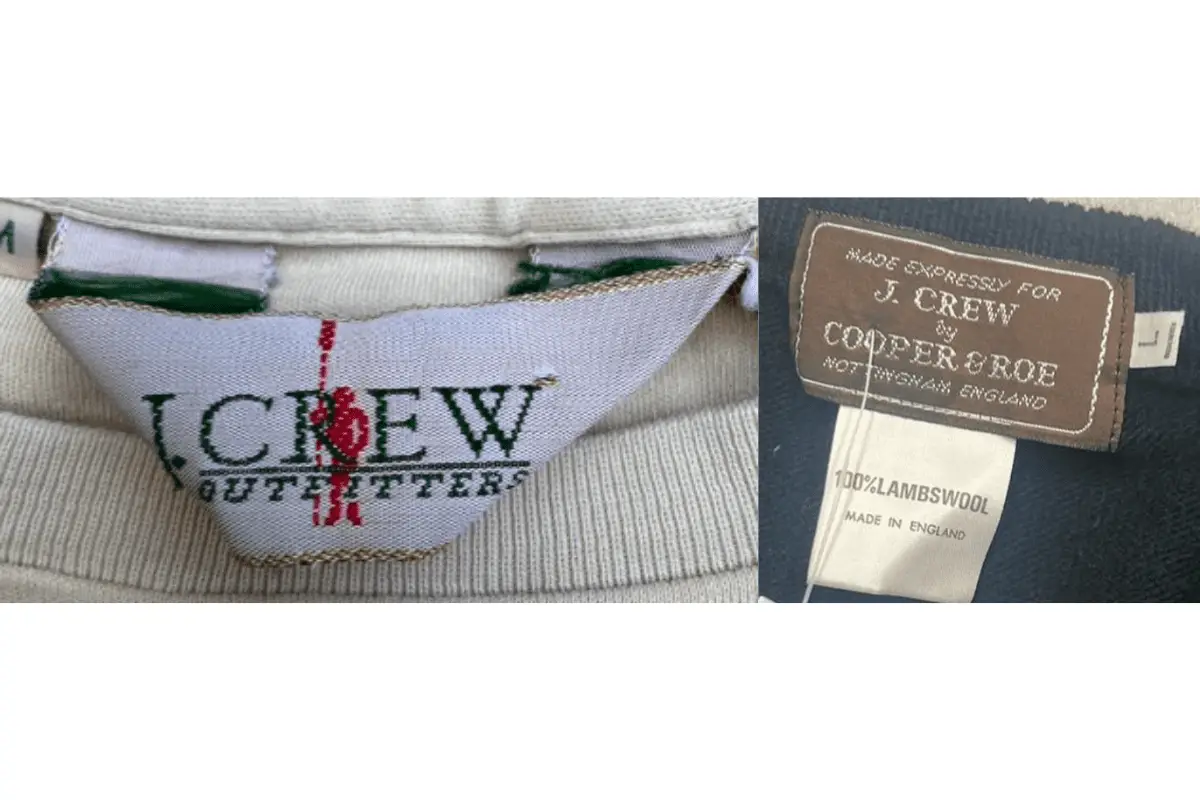
1970s J Crew tags
1980s vintage J.Crew tags
- Introduction of bold colors and sport-oriented designs.
- Tags may feature a standing figure, symbolizing the brand’s activewear line.
- Size information often included on smaller, separate tags.
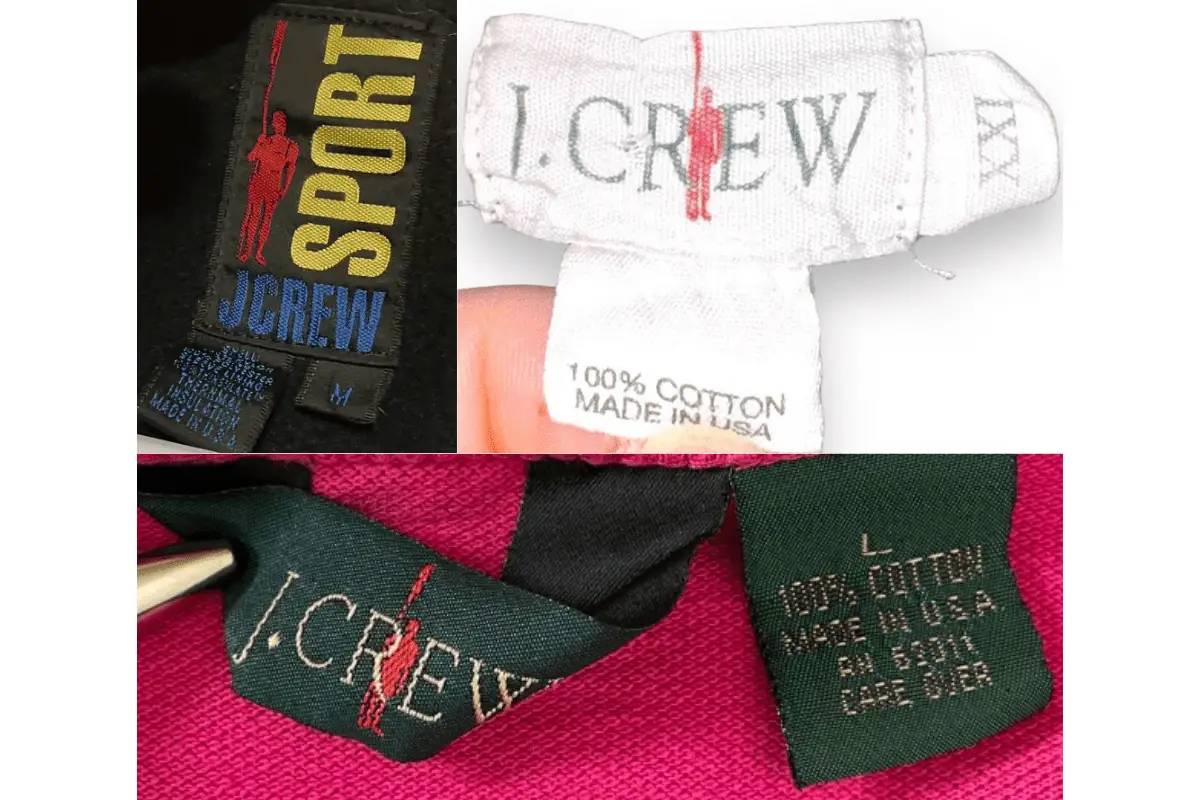
1980s J Crew tags
1990s vintage J.Crew tags
- Tags often display a classic serif logo, sometimes paired with an illustrative figure.
- Garments from this era might show “Made in USA” or other countries as J.Crew began expanding its manufacturing locations.
- Quality indicators such as fabric composition and care instructions included.
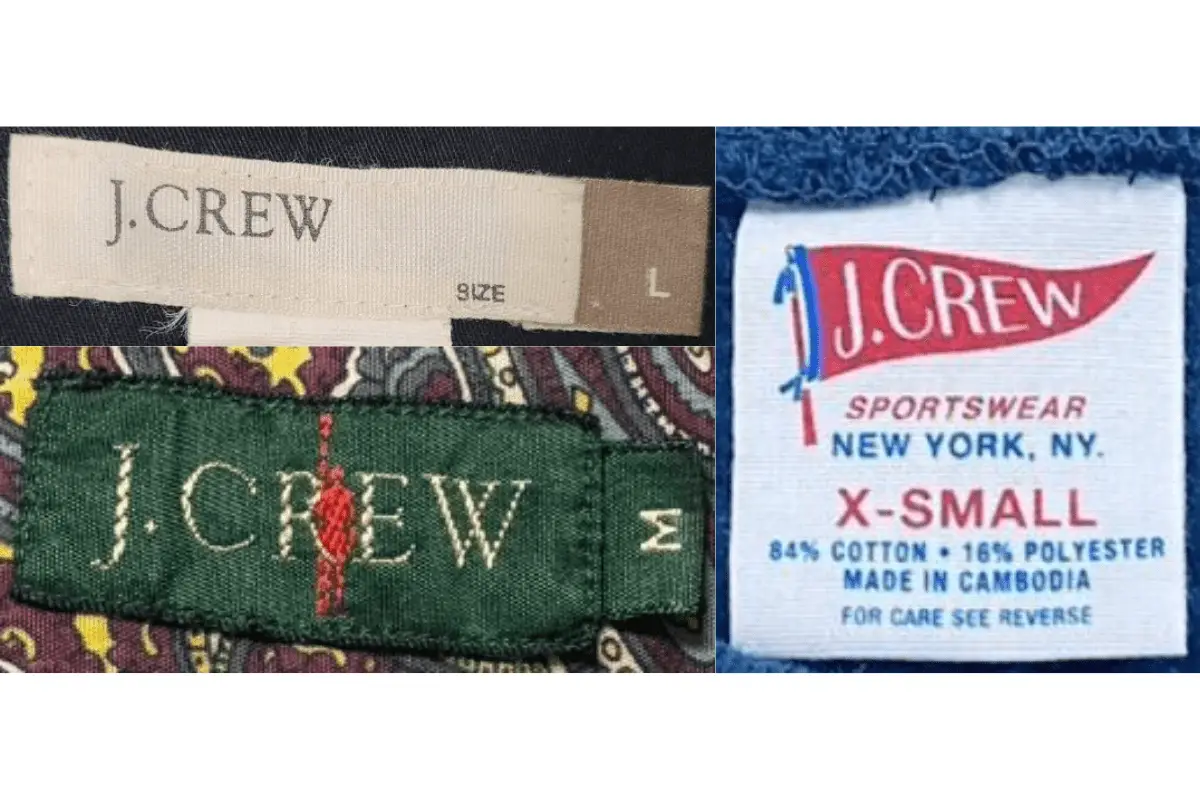
1990s J Crew tags
2000s vintage J.Crew tags
- Tags reflect a more modern aesthetic with cleaner lines and updated fonts.
- Introduction of loop tags for certain items, offering a different approach to branding.
- Country of origin and size information often included, showing the global reach of production.
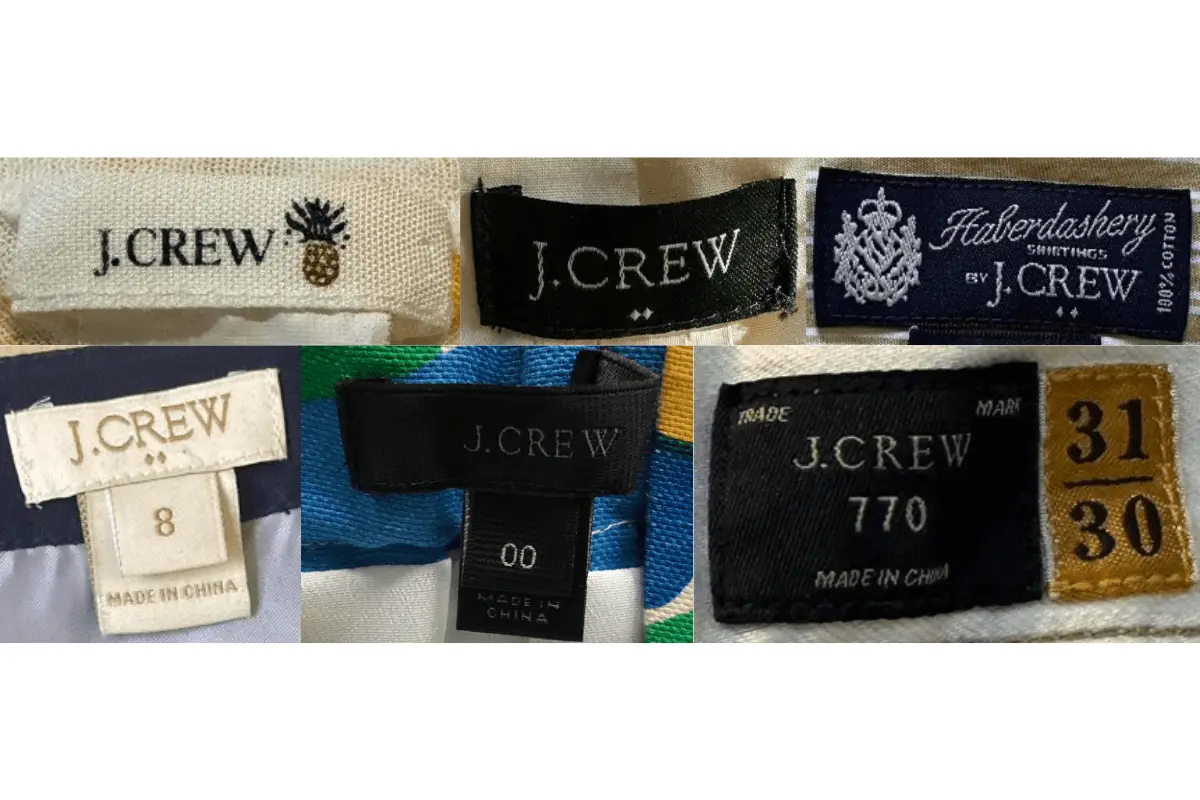
2000s J Crew tags
2010s vintage J.Crew tags
- Tags become more varied in design, with multiple styles and layouts introduced.
- Continued use of the classic J.Crew logo, maintaining brand consistency.
- Tags may use a variety of colors and materials, reflecting modern manufacturing techniques and trends.
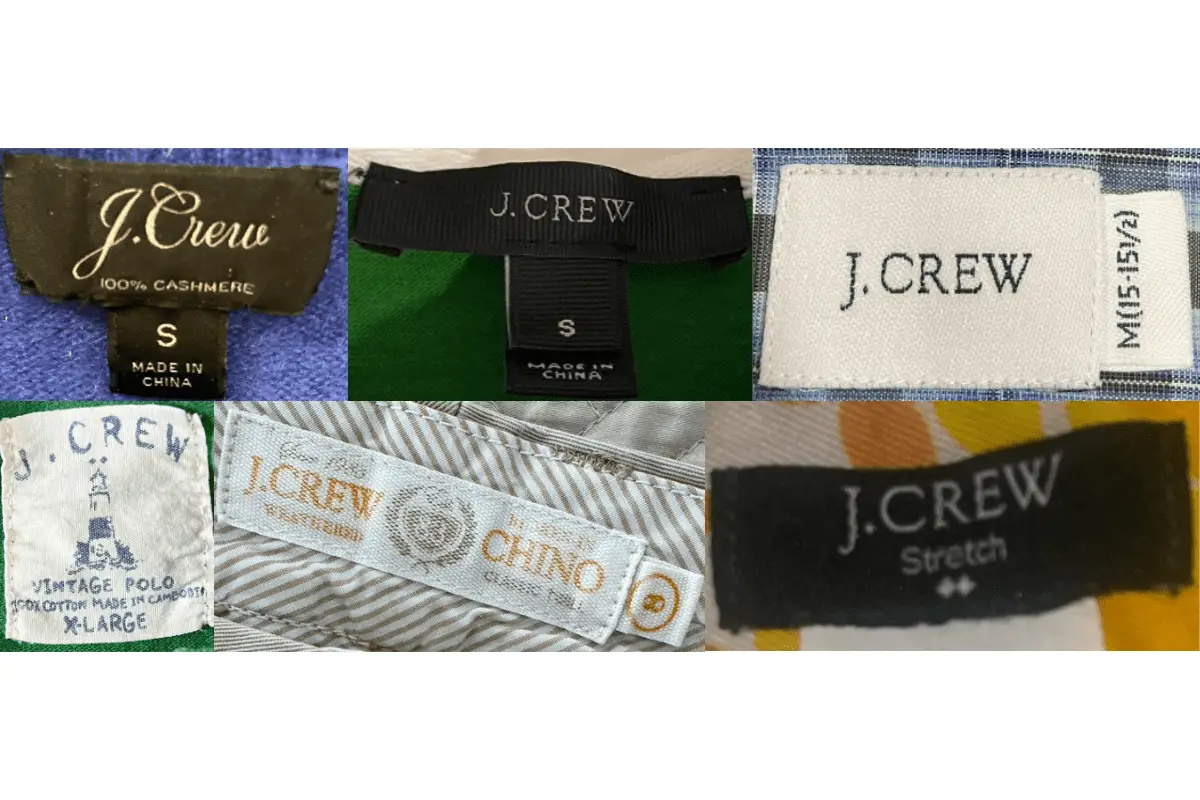
2010s J Crew tags




Howdy just wanted to give you a quick heads up. The words in your article seem to be running off the screen in Ie. http://www.hairstylesvip.com
Hi there to every one, since I am really eager of reading this blog’s post to be updated on a regular basis. It includes fastidious data.
Wow, fantastic blog layout! How long have you been blogging for? you make blogging look easy. The overall look of your site is great, let alone the content!
These are actually great ideas in about blogging. You have touched some pleasant things here. Any way keep up wrinting.
Hello there! I could have sworn I’ve been to this blog before but after checking through some of the post I realized it’s new to me.Anyways, I’m definitely glad I found it and I’ll be bookmarking and checking back frequently!
I’m not that much of a internet reader to be honest but your blogs really nice, keep it up! I’ll go ahead and bookmark your website to come back in the future.
This is the right webpage for anybody who wishes to understand this topic. You realize so much its almost tough to argue with you (not that I really will need to…HaHa). You certainly put a fresh spin on a topic which has been discussed for ages. Excellent stuff, just wonderful!